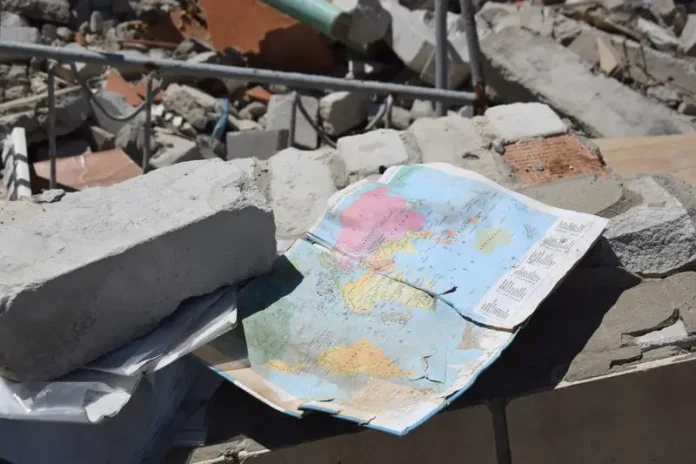A Bangladesh Air Force training jet crashed into a school campus in Dhaka on Monday, July 21, 2025, at 1:06 p.m., killing 31 people and injuring 165 others in the country’s deadliest aviation disaster in recent memory.
The Chinese-made F-7 BGI aircraft experienced mechanical failure shortly after takeoff from the A.K. Khandaker air force base during a routine training mission. The jet slammed into the two-story building of Milestone School and College in the densely populated Uttara neighborhood, engulfing the structure in flames and smoke.
Among the fatalities were 25 students, many under 12 years old, one teacher, and the pilot, Flight Lieutenant Mohammed Toukir Islam. The pilot had attempted to divert the aircraft away from populated areas toward a less inhabited location after the mechanical fault occurred, according to military officials. It was Islam’s first solo flight as he completed his training course.
The crash occurred as students were finishing afternoon classes and parents had gathered outside the school gates. The affected building housed approximately 100 students between ages six and 13. Maherin Chowdhury, a teacher who rescued more than 20 students from the burning building, died from severe burn injuries sustained during the rescue effort.
Mohammad Imran Hussein, a lecturer in the school’s English department who witnessed the crash from across the playground, told reporters he saw scattered body parts and described the scene as horrific. Hussein indicated that “the sound was really intolerable” when describing the moment of impact.
Emergency responders transported victims to seven hospitals across the city using helicopters, ambulances, motorized rickshaws, and by hand. More than 50 people were taken to the National Institute of Burn and Plastic Surgery with severe burns, many in critical condition. As of Tuesday, 78 people remained hospitalized, with 24 in critical condition.
The tragedy prompted hundreds of students to protest near the crash site on Tuesday, demanding accountability, compensation for victims’ families, and the halt of training flights over populated areas. Students held placards and shouted slogans asking why their classmates died and demanding answers from officials.
The protesters’ demands included accurate publication of victim identities, compensation for affected families, retirement of outdated aircraft, and changes to air force training procedures. They accused security officials of beating protesters and manhandling teachers on Monday. When two senior government advisers arrived at the scene, students became agitated, forcing the officials to take cover.
Separate protests occurred at the federal government secretariat, where students broke through the main gate demanding the education adviser’s resignation. Police responded with tear gas and sound grenades, reportedly injuring approximately 80 students.
Families of victims expressed devastation over their losses. Nine-year-old Zunayet Hasan was among the children killed in Class 3, which bore the brunt of the crash impact. His grandfather, Muhammad Ali, described finding the boy’s ID card posted on Facebook before locating him in the hospital burns unit, where he died despite being placed on life support.
Abul Hossain spoke about his nine-year-old daughter, Nusrat Jahan Anika, who was killed in the crash. He described taking her to school that morning like every day, not knowing it would be the last time he would see her. She was buried Monday night.
The Milestone School and College serves approximately 2,000 students from elementary through 12th grade. The crashed building was one of about 20 structures on the campus, located roughly seven miles from the air force base in an area near a metro station and numerous shops and homes.
Muhammad Yunus, leader of Bangladesh’s interim government, announced necessary measures would be taken to investigate the incident and ensure assistance for victims. The country observed Tuesday as a national day of mourning, with flags flying at half-staff. An investigation committee was formed to examine the crash causes.
The military’s armed forces public relations directorate confirmed that 20 bodies had been handed over to families, with some requiring DNA matching due to severe charring. A blood donation camp was established at the specialized burn hospital, treating most victims. The incident marks the deadliest plane crash in the Bangladeshi capital in recent memory.
In 2008, another F-7 training jet crashed outside Dhaka, killing its pilot, who had ejected after discovering a technical problem.
The government statement indicated that the air force would be instructed not to operate training aircraft in populated areas going forward.

